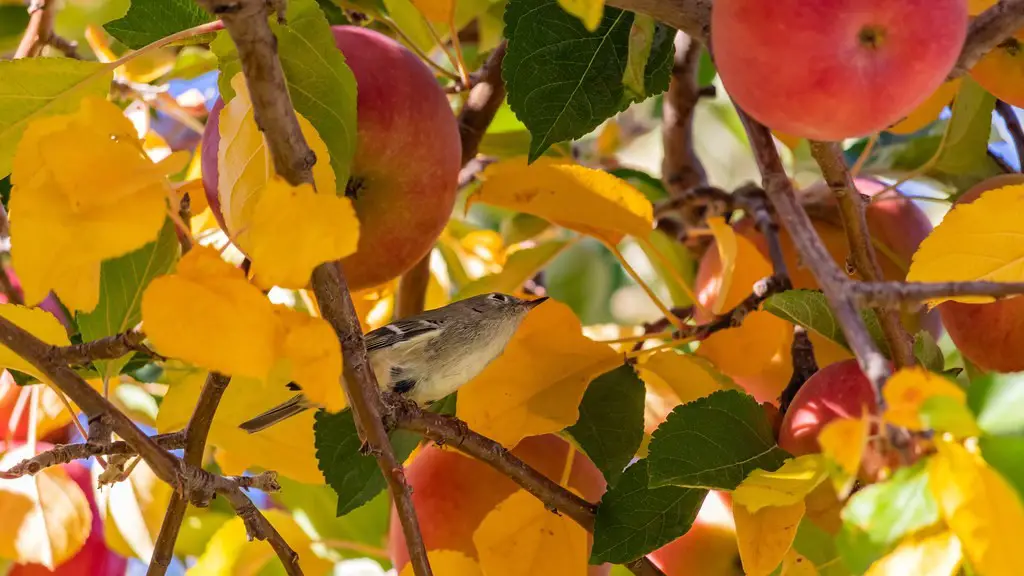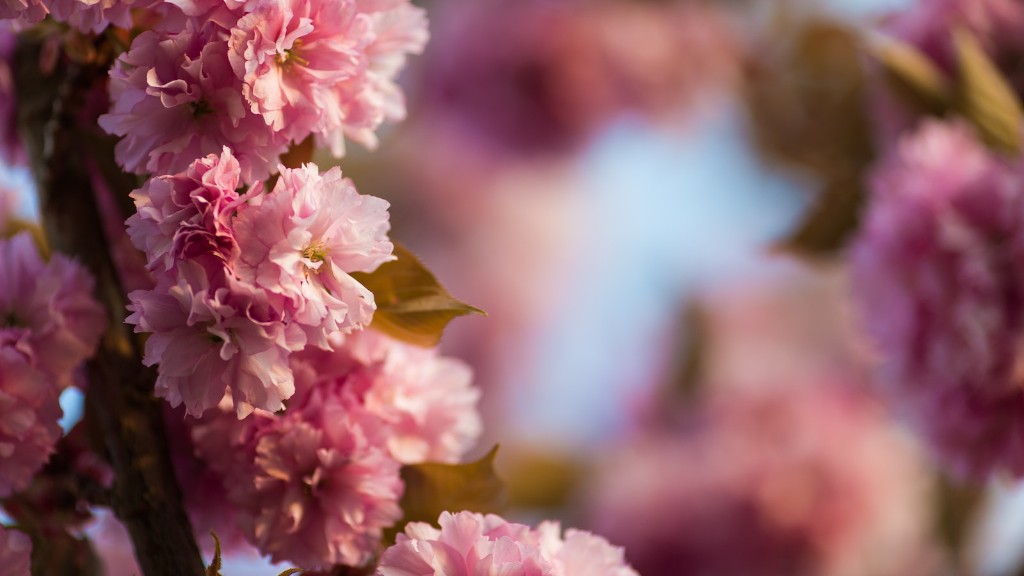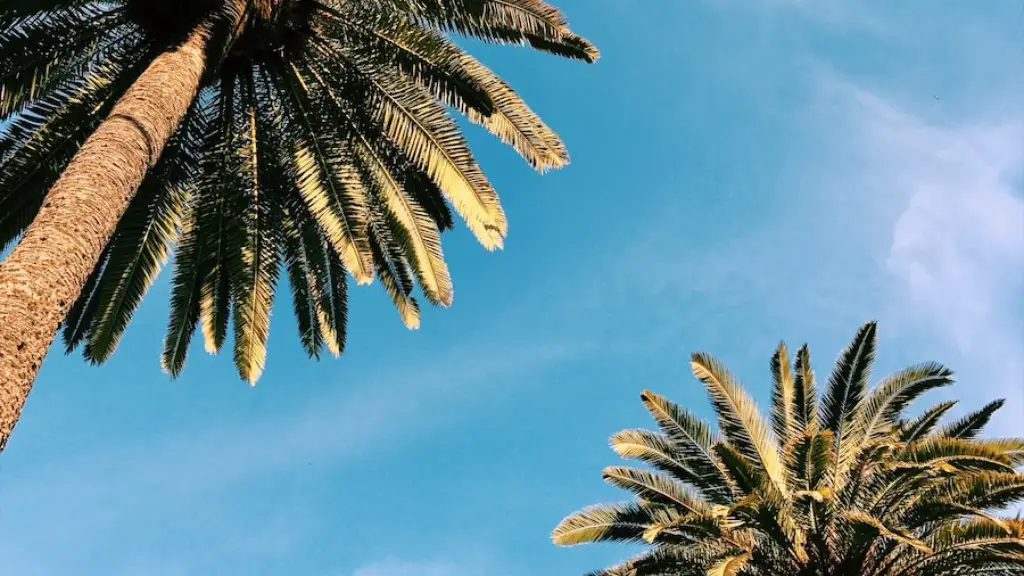No matter where you look in the Middle East or North Africa, you’ve probably seen a date palm. The iconic tree provides farmers and home gardeners with a tasty fruit and supplies the region with jobs and income. Aspiring gardeners and commercial farmers alike are in luck when it comes to planting a date palm tree: the process is surprisingly straightforward and the rewards are more than worth the effort. Read on to learn how to start a date palm and what you’ll need to do to get the planting process underway.
The first step in planting a date palm is finding suitable seed stock. Seeds can come from a local nursery or hardware store, or they can be sourced directly from a farm. In either case, it’s important to buy the highest quality seeds possible. The date palm is actually a dioecious species which means it has separate male and female trees, so make sure to purchase both if you plan to create a male-female fruiting tree. You may also want to purchase several additional seeds in case one or two of your seedlings don’t survive.
Seeds need to be soaked for several hours or overnight to soften the tough outer shell. Once the seed has been moistened, it should be inserted into a cup of soil, with the pointed end of the seed resting just beneath the surface. Water the cup and place in a sunny spot, then wait for the process of germination to begin – typically two to four months.
If you’re lucky, germination will go without a hitch and once the seed has sprouted and the process of rapid growth begins. However, if you’re not getting the results you want, be prepared to do a bit of extra work. This may involve thinning the seedlings or providing more sunlight or water. If the seed isn’t germinating, you may need to transplant the seedlings in better soil or provide more warmth.
After the trees have grown to a height of approximately twelve inches, they’re ready to be transplanted. Before planting into the soil, create drainage holes in the soil with a shovel and sprinkle some organic matter around the hole. Place the seedling into the hole and lightly press the soil around the roots. When watering the soil, take care not to overwater the trees, as this will result in root rot. At this point, a bit of mid-summer pruning may be in order to encourage new growth.
Date palms thrive in warm, sunny climates and should be planted in an area that receives at least six hours of sunlight each day. They also need to be watered every other day – avoid overwatering as it can cause root rot – and fertilized once a month during their growing season.
Vermicomposting
Vermicomposting is a great way to give your date palms the nutrients they need. It involves using the natural processes of worms to create compost, which can be added to the soil around date palms. This type of compost allows the minerals and nutrients that date palms need to be released slowly, providing them with the maximum benefit.
The worms used in vermicomposting should be added during the late fall, as the worms are able to eat the decaying leaves of the date palms tree, which provides them with the nutrients they need. The compost can be applied in a layer directly over the soil in which the tree is planted.
Vermicomposting also helps to retain moisture in the soil, making it easier for the tree to absorb any rainfall or irrigation. As the worms dig through the soil, tunnels are created which provide air flow, enabling the soil to better absorb oxygen and nutrients. Additionally, the worms act as natural predators of pests, which helps to keep them away from the trees.
Overall, vermicomposting is a great way to help date palm trees thrive in the long term. It provides them with the nutrients they need to grow, while also retaining moisture and helping to control pests.
Pruning
Pruning your date palm is essential for the health and longevity of the tree. Pruning helps to keep the tree healthy and encourages the production of more succulent fruit, as well as helps to maintain an attractive shape. Pruning should be done a few times a year and is best done during the late winter or early spring.
Begin by removing damaged or dead branches, as well as any branches that are crossed or laying over each other. Use a pair of loppers, a hand saw, or a pruning shears to remove the branch at its base. This will encourage new growth in the tree and will help to keep the date palm healthy.
Next, remove any new growth, such as seedling shoots, using the same tools. When pruning, make sure to leave a minimum of three buds at each branch to ensure the health of the tree. If you need to, you can prune off any excess growth, but make sure to leave enough for the tree to grow fruit in the summer.
You may also need to trim the tips of some of the leaves, especially in older trees, as this will ensure that the leaves are able to take in the maximum amount of sunlight. Finally, cut off any shoots that are situated in a less than ideal location, such as in between other leaves or branches.
In-Ground Planting
Once the date palm has reached a height of approximately three feet, it is ready to be planted in the ground. To do so, make sure that the ground has been prepared with organic material such as sand, compost, or manure. Dig a hole that is slightly larger than the root ball of the tree and place the tree in the center. Fill the remainder of the hole with the soil and gently pat the soil down.
When the tree is planted, make sure to water it sufficiently so that the soil is moist. During its initial growth, date palms need to be watered one to two times a week, depending on the climate. The tree should also be fertilized once a month, using a fertilizer that is high in nitrogen and potassium.
Once the tree has been planted, take care not to overwater it or expose it to too much direct sunlight. The tree will eventually be able to withstand more sun, but for the first few months, limit it to the four to six hours a day of sun recommended for the species.
Harvest
Once your date palms have been planted and cared for it won’t be long until you can begin to reap their rewards. To harvest the dates, it is best to wait until the end of the summer when the dates are ripe. At this point, the dates will be a vibrant golden-brown and have a firm, chewy texture.
When harvesting, use a pruning shears to cut the dates from the tree. Make sure to leave a few of the dates on the tree to help ensure that each palm is able to produce multiple crops throughout the growing season. Dates should be stored in a cool, dry location away from direct sunlight, and should be eaten within three to four days.
Preservation
If you want to store your dates for an extended period of time, there are a few different preservation methods that can be used. For example, you can dry the dates or can them in sugar syrup. If you choose to dry the dates, simply spread them out on a baking sheet and place in the sun for two to four days until they are completely dry. Then you can store them in sealed containers.
If you choose to can the dates, follow the manufacturer’s instructions for preparing them. This process involves first removing the pits from the dates and washing them thoroughly. Then you’ll need to add sugar and water to a large pot and bring it to a boil. Place the dates in the pot and simmer on low heat for approximately thirty minutes, stirring regularly.
Once the dates are soft and able to be mashed, strain them through a cheesecloth and spread them out in an even layer on a baking sheet. Thoroughly dry the dates in the sun before transferring them to airtight containers. Dates can be stored in this way for up to a year.
Issue of Fertilisers
Giving your date palm tree the necessary nutrients and minerals requires care and attention. Fertilisers provide a balanced diet for the tree by supplying it with nitrogen, potassium and phosphorus.
It is important to choose the right type of fertiliser suitable for the date palm tree, as different varieties of fertilisers are better suited for different types of plants. A comprehensive fertiliser should contain a mixture of macronutrients (nitrogen, potassium, phosphorus), micronutrients (calcium, magnesium, sulphur), and trace elements.
The best results are achieved by feeding the tree with a slow-release fertiliser. This will ensure that the tree’s nutrient needs are met for an extended period of time. Slow-release fertilisers can be applied during the spring and again in the fall.
It is best to apply the fertiliser in a ring around the base of the tree, as this will ensure that the nutrients reach the root zone. Additionally, it is important to make sure that the fertiliser is worked into the soil, as this will make it easier for the root system to absorb the nutrients.
It is also important to monitor the pH level of the soil. The date palm tree prefers a soil pH between 6.0 and 7.5. If the soil is too alkaline, it can cause the tree to become stunted and may make it vulnerable to diseases. Adjusting the soil pH can be done by adding limestone or compost.
Pests and Diseases
Date palms can be susceptible to all sorts of pests and diseases. Common diseases include fungi and leaf spot, while common pests include aphids, scales, whiteflies and mealybugs. Keeping an eye out for early signs of the above can help you to take the necessary steps to prevent further damage.
Using insecticidal sprays can help to control insect infestations, but you should always read the label before applying it to your tree. Some pests can be controlled by releasing predatory species or beneficial insects, such as ladybugs. Fungal diseases can be hard to get rid of, so it is best to take preventative measures, such as keeping the soil well-drained and free of debris.
It is also important to keep your date palms well-watered, as this will help to prevent the onset of diseases. Additionally, using a mulch around the tree can help to keep the soil cool and moist, which will also help to protect the tree from disease.
Finally, pruning your tree on a regular basis can help to keep it healthy. Removing dead, dying or damaged branches will help to reduce the risk of infection.




